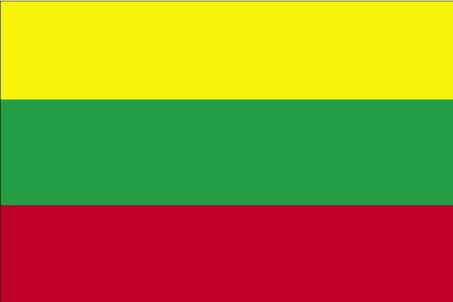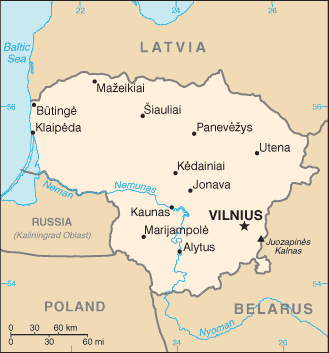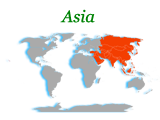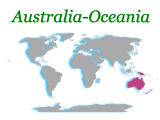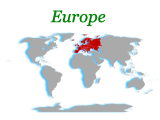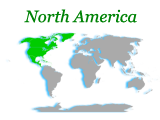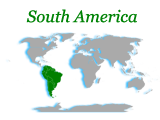Lithuanian lands were united under MINDAUGAS in 1236; over the next century, through alliances and conquest, Lithuania extended its territory to include most of present-day Belarus and Ukraine. By the end of the 14th century Lithuania was the largest state in Europe. An alliance with Poland in 1386 led the two countries into a union through the person of a common ruler. In 1569, Lithuania and Poland formally united into a single dual state, the Polish-Lithuanian Commonwealth. This entity survived until 1795 when its remnants were partitioned by surrounding countries. Lithuania regained its independence following World War I but was annexed by the USSR in 1940 - an action never recognized by the US and many other countries. On 11 March 1990, Lithuania became the first of the Soviet republics to declare its independence, but Moscow did not recognize this proclamation until September of 1991 (following the abortive coup in Moscow). The last Russian troops withdrew in 1993. Lithuania subsequently restructured its economy for integration into Western European institutions; it joined both NATO and the EU in the spring of 2004.
Country Name
Conventional long form:Republic of Lithuania
Conventional short form: Lithuania
Local long form:Lietuvos Respublika
Local short form: Lietuva
Former:Lithuanian Soviet Socialist Republic
Government Type
parliamentary democracy
Capital
Name: Vilnius
Geographic coordinates:54 41 N, 25 19 E
Time difference:UTC+2 (7 hours ahead of Washington, DC during Standard Time)
daylight saving time: +1hr, begins last Sunday in March; ends last Sunday in October
Administrative divisions
10 counties (apskritys, singular - apskritis); Alytaus, Kauno, Klaipedos, Marijampoles, Panevezio, Siauliu, Taurages, Telsiu, Utenos, Vilniaus
Independence
11 March 1990 (declared); 6 September 1991 (recognized by the Soviet Union)
National Holiday
Independence Day, 16 February (1918); note - 16 February 1918 was the date Lithuania declared its independence from Soviet Russia and established its statehood; 11 March 1990 was the date it declared its independence from the Soviet Union
Constitution
adopted 25 October 1992; last amended 13 July 2004
Legal system
based on civil law system; legislative acts can be appealed to the constitutional court; has not accepted compulsory ICJ jurisdiction
Suffrage
18 years of age; universal
Executive branch
Chief of state:President Dalia GRYBAUSKAITE (since 12 July 2009)
Head of government:Prime Minister Andrius KUBILIUS (since 27 November 2008)
Cabinet:Council of Ministers appointed by the president on the nomination of the prime minister
(For more information visit the World Leaders website)
Elections:president elected by popular vote for a five-year term (eligible for a second term); election last held on 17 May 2009 (next to be held in May 2014); prime minister appointed by the president on the approval of the Parliament
Election results:Dalia GRYBAUSKAITE elected president; percent of vote - Dalia GRYBAUSKAITE 69.1%, Algirdas BUTKEVICIUS 11.8%, Valentinas MAZURONIS 6.2%, others 12.9%; Andrius KUBILIUS' government approved by Parliament 83-40 with 5 abstentions
Legislative branch
unicameral Parliament or Seimas (141 seats; 71 members elected by popular vote, 70 elected by proportional representation; members to serve four-year terms)
Elections:last held on 12 and 26 October 2008 (next to be held in October 2012)
Election results:percent of vote by party - TS-LKD 19.7%, TPP 15.1%, TT 12.7%, LSDP 11.7%, KDP+J 9%, LRLS 5.7%, LCS 5.3%, LLRA 4.8%, LVLS 3.7%, NS 3.6%, other 8.7%; seats by faction - TS-LKD 44, LSDP 26, TPP 16, TT 15, LRLS 11, KDP+J 10, LCS 8, LLRA 3, LVLS 3, NS 1, independent 4; note - seats by faction as of 15 March 2010 - TS-LKD 46, LSDP 25, TT 18, Christian Party 12, LS 11, DP 10, LCS 7, TPP 7, unaffiliated 5; note - TS-LKD, LS, LCS, and TPP form the ruling coalition
Judicial branch
Constitutional Court; Supreme Court; Court of Appeal; judges for all courts appointed by the president
Political Parties and Leaders
Christian party [Gediminas VAGNORIUS]; Civil Democracy Party or PDP [Algimantas MATULEVICIUS]; Electoral Action of Lithuanian Poles or LLRA [Valdemar TOMASZEVSKI]; Homeland Union - Lithuanian Christian Democrats or TS-LKD [Andrius KUBILIUS]; Labor Party or DP [Viktor USPASKICH]; Liberal and Center Union or LCS [Gintautas BABRAVICIUS]; Liberal Movement or LS or LRLS [Eligijus MASIULIS]; Lithuanian Farmers' Union or LVLS or VLS [ Ramunas KARBAUSKIS]; Lithuanian People's Party (not yet officially established) [Kazimiera PRUNSKIENE]; National Revival or TPP [Arunas VALINSKAS]; New Union (Social Liberal) or NS [Arturas PAULAUSKAS]; Order and Justice Party or TT [Rolandas PAKSAS]; Social Democratic Party or LSDP [Algirdas BUTKEVICIUS]
International organization participation
Australia Group, BA, BIS, CBSS, CD, CE, EAPC, EBRD, EIB, EU, FAO, IAEA, IBRD, ICAO, ICC, ICCt, ICRM, IDA, IFC, IFRCS, ILO, IMF, IMO, Interpol, IOC, IOM, IPU, ISO, ITU, ITUC, MIGA, NATO, NIB, NSG, OIF (observer), OPCW, OSCE, PCA, Schengen Convention, UN, UNCTAD, UNESCO, UNIDO, UNWTO, UPU, WCO, WFTU, WHO, WIPO, WMO, WTO
Diplomatic representation in the US
Chief of mission:Ambassador Audrius BRUZGA
Chancery:2622 16th Street NW, Washington, DC 20009
Telephone:[1] (202) 234-5860
FAX:[1] (202) 328-0466
Consulate(s) general:Chicago, New York
Diplomatic representation from the US
Chief of mission:Ambassador Anne E. DERSE
Embassy:Akmenu gatve 6, Vilnius, LT-03106
Mailing address:American Embassy, Akmenu Gatve 6, Vilnius LT-03106
Telephone: [370] (5) 266 5500
FAX:[370] (5) 266 5510
Flag description
three equal horizontal bands of yellow (top), green, and red; yellow symbolizes golden fields, as well as the sun, light, and goodness; green represents the forests of the countryside, in addition to nature, freedom, and hope; red stands for courage and the blood spilled in defense of the homeland
